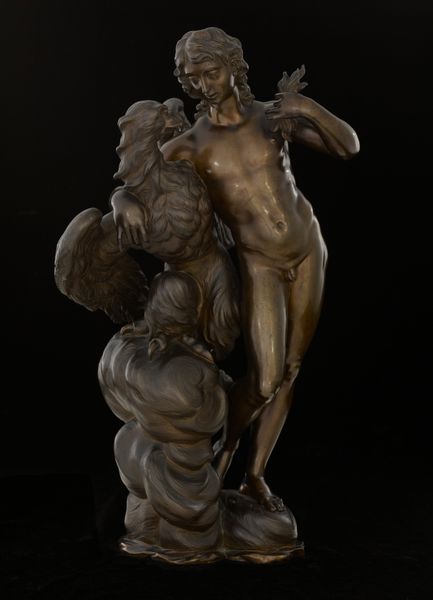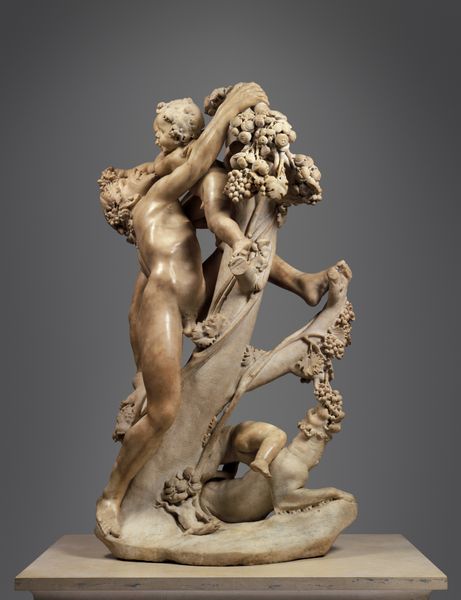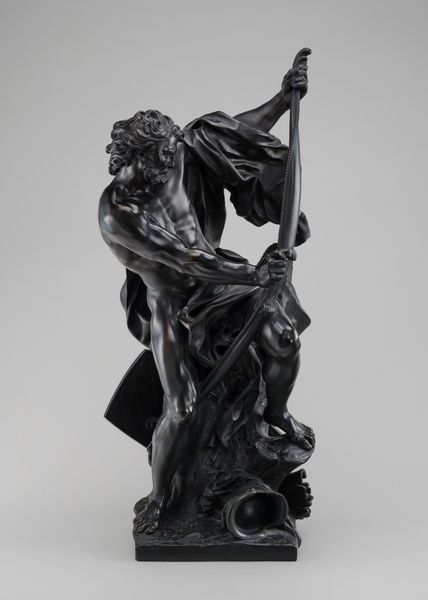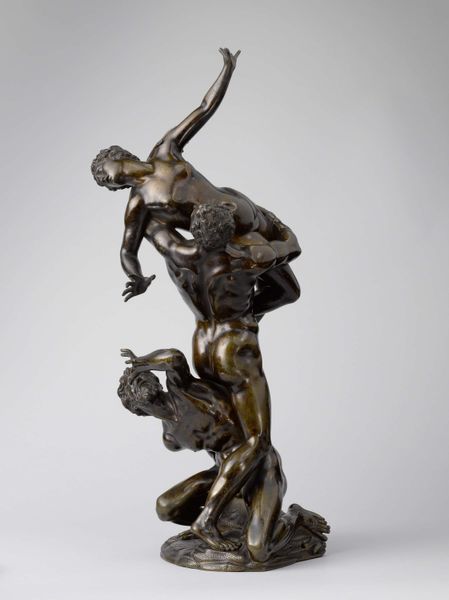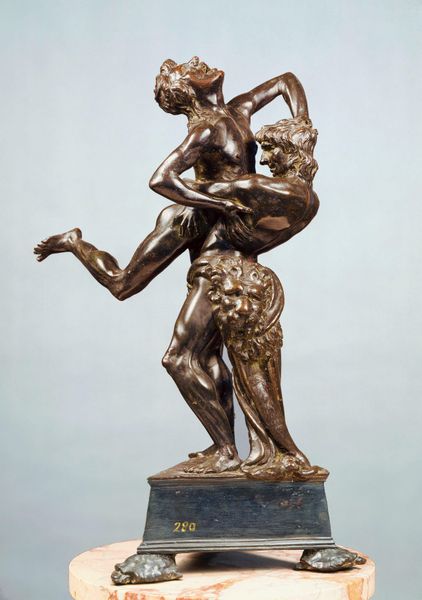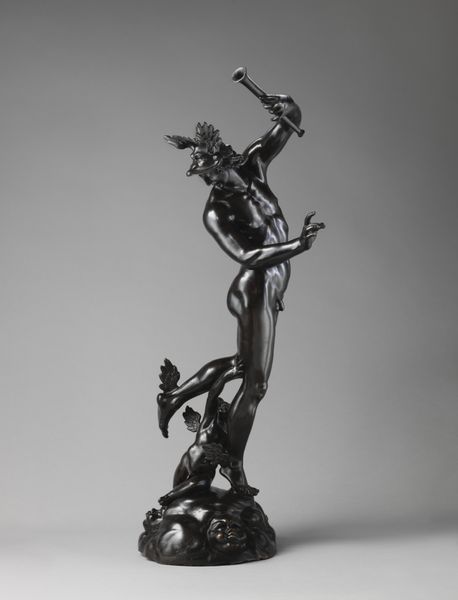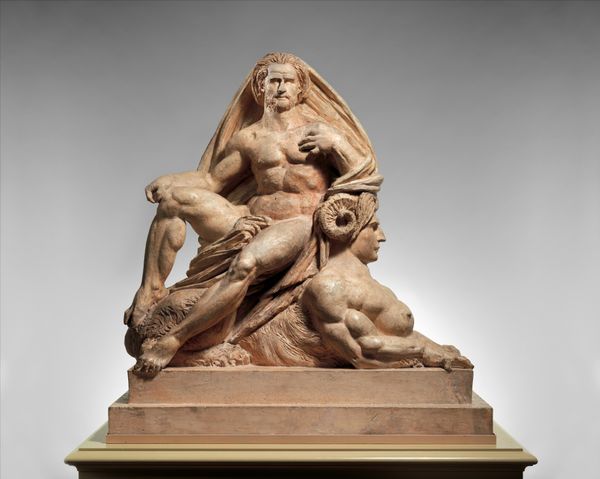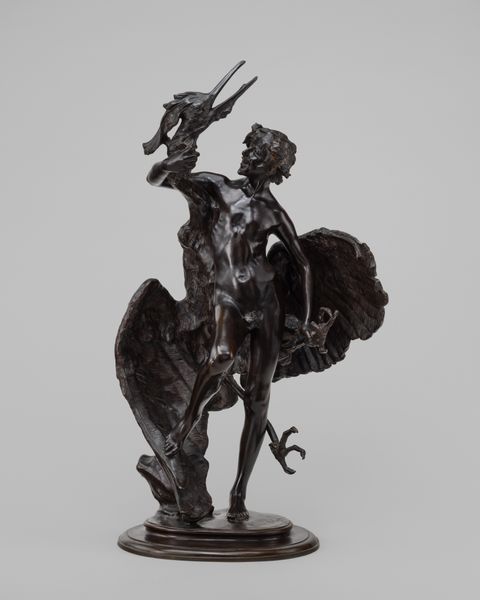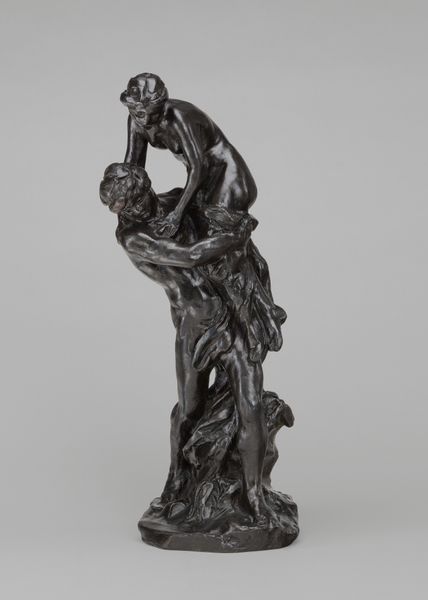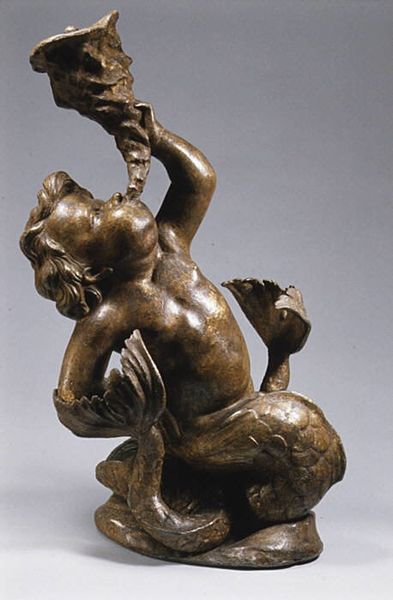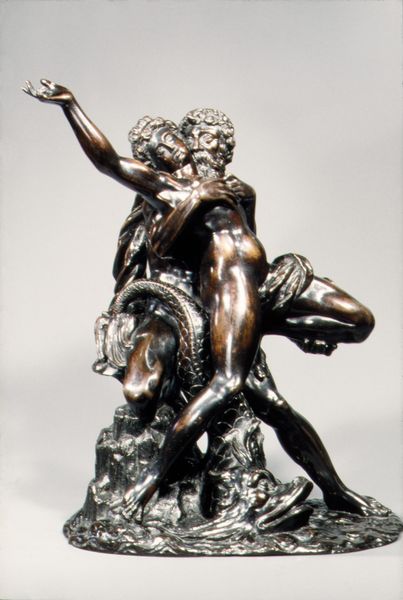
bronze, sculpture
#
baroque
#
sculpture
#
bronze
#
figuration
#
sculpture
#
nude
#
erotic-art
Copyright: Public Domain
Editor: This bronze sculpture, “Leda and the Swan,” was created around 1710 by Antonio Montauti. It's… striking, isn’t it? The contrast between Leda’s smooth skin and the swan’s feathery texture, and that intimate embrace. How do you interpret this work? Curator: Oh, this piece. It always sparks something in me. The way Montauti captured this myth... It's more than just a depiction, isn't it? I see a dance between power and vulnerability. A reflection on the blurring of boundaries – divine and mortal, human and animal. That downward gaze, that embrace. It all tells a tale of encounter. Do you notice how the figures swirl, and rise? Editor: Yes! I can feel the Baroque influence—the movement, the drama. The surface has these areas that are clearly defined, yet, the next moment they turn abstract. Curator: Absolutely! It pulls you in. The myth itself, Zeus's transformation, has resonated through the ages. Some see conquest; others, something more...nuanced. What's the feeling you get? Editor: I guess it's unsettling because it presents this famous moment without telling me how to feel. The whole experience is deeply personal. I see something slightly violent in its elegance, yet full of sensual, natural elements. Curator: And that tension, that unease… is precisely what makes it endure. I find it's like poetry –the space is between what is presented that unlocks our sense for feeling and interpreting the moment and, in effect, ourselves. Editor: I never thought of sculpture having a relationship to poetry, in that it leaves us space to consider. Thanks for the insight. I'm going to be pondering Leda and her swan for days now.
Comments
minneapolisinstituteofart almost 2 years ago
⋮
Zeus, the ancient Greek god of the sky and thunder, desired Leda, the beautiful wife of Tyndareus, king of Sparta. To win her affection, he assumed the elegant guise of a swan and approached her on a riverbank. In Montauti’s work, the two are shown in a tender embrace, with the swan inclining intently to meet the mortal Leda’s affectionate gaze. Their close eye contact suggests they share not only a physical attraction—the main focus of most artistic representations of the subject—but a psychological attraction as well. Note too the variety of vivid surface textures the artist achieves, from Leda’s supple flesh to the swan’s delicate plumage to the misty vapor of the cloud that encircles both figures.
Join the conversation
Join millions of artists and users on Artera today and experience the ultimate creative platform.
